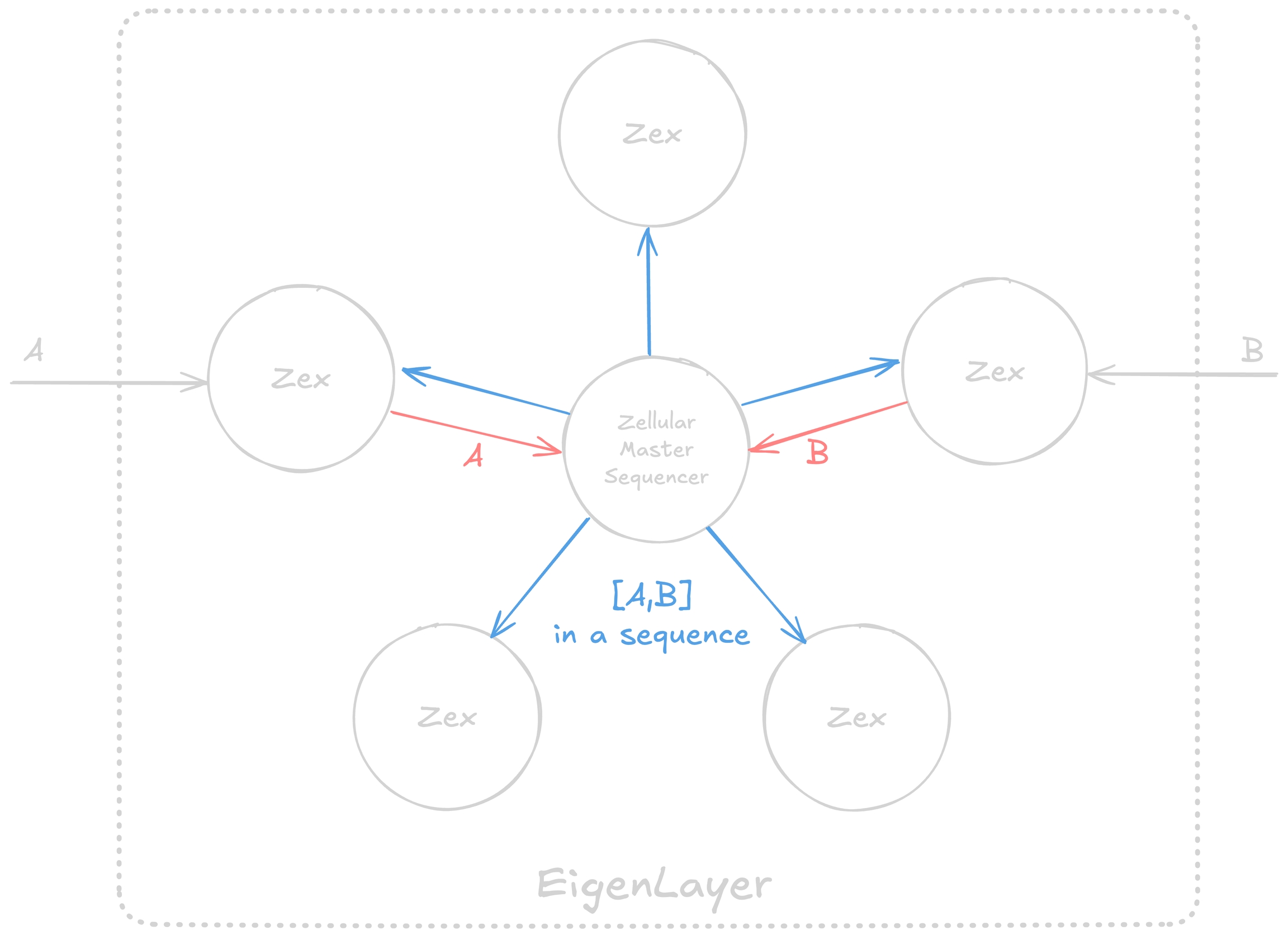Synchronization
Zex AVS: Decentralization and State Synchronization
Zex AVS is designed to operate in a decentralized manner. This means that multiple nodes must execute transactions, update the system state, and maintain consistency across the network. However, consider a scenario where one node executes Transaction followed by Transaction , while another node executes Transaction first. In such cases, the Zex network could become unsynchronized, leading to inconsistencies in the system state.
To address this issue, we first introduce the concept of a Replicated State Machine (RSM).
Replicated State Machine
A Replicated State Machine (RSM) is a distributed computing model that ensures multiple nodes in a network execute the same sequence of transactions in the same order, thereby maintaining a consistent system state. In a decentralized environment like Zex AVS, where different nodes process transactions independently, an RSM guarantees that all nodes remain synchronized regardless of execution order discrepancies.
To achieve this, RSMs rely on deterministic execution and consistent transaction ordering. Each node starts from the same initial state and processes an identical sequence of transactions in a predefined order. This order is enforced by a leader-based or consensus-driven mechanism, such as Byzantine Fault Tolerant (BFT) consensus or a decentralized sequencer like the Zellular Sequencer in Zex. By doing so, the network prevents state divergence and ensures that every node reflects the correct, agreed-upon state at any given time.
Using the Zellular Sequencer
In Zex AVS, the combination of Replicated State Machine (RSM) principles and the Zellular Sequencer ensures seamless transaction synchronization, eliminating the risk of inconsistent states across nodes while maintaining decentralization and high throughput.
Zex AVS includes an integrated Zellular Sequencer client that processes unsequenced transactions. When a transaction is received, Zex AVS sends it to this client, which then forwards all transactions to an EigenLayer node hosting the Zellular Master Sequencer. The Master Sequencer orders the transactions in a consistent and deterministic manner, ensuring that all network participants execute them in the same order. Once sequenced, the transactions are sent back to the Zellular Sequencer client within Zex AVS, ensuring proper execution across all nodes.

This structured approach guarantees transaction finality while preventing inconsistencies, allowing Zex AVS to function as a high-performance, decentralized exchange system.